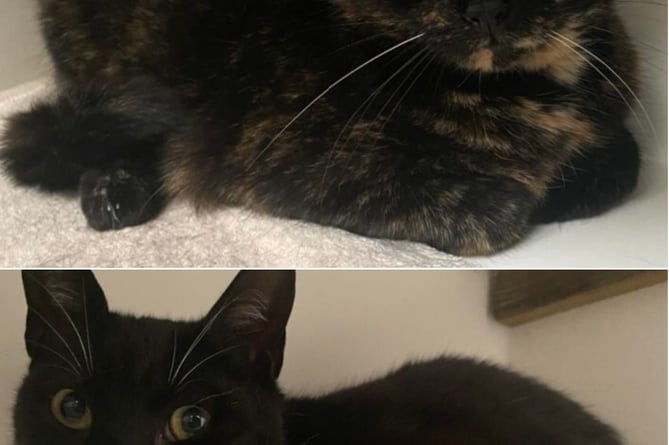When it comes to feline companions and cat-to-cat relationships, there’s no rule book.
As with many areas of cat ownership, things are never straightforward.
Many people think a single cat in the household must be a lonely cat, but many cats prefer this set-up – after all, the domestic cat has evolved from wild cats who hunted alone and were often solitary.
If one cat from an elderly pair sadly passes away, it may be tempting to get the remaining cat a friend in the form of a new kitten.
Perhaps the kitten will bring a new lease of life to the old cat, you may think.
Unfortunately these situations often don’t go well, and cause stress and anxiety to one or both cats.
Elderly cats and kittens are on completely different wavelengths and a bouncy, boisterous kitten has much higher energy levels and needs than even the fittest and most active of senior cats.
The average older cat is looking for a quiet life with creature comforts and a readily available warm lap to sit on.
They may even blossom after the demise of their life-long companion – they may enjoy having their owner all to themselves, and being able to eat their meals at a leisurely pace without fear that another cat will steal their food.
Adding another cat to a household can be a common stressor for the existing cat or cats, and inter-cat conflict can range from open clawed combat through to much more subtle behaviours.
Generally speaking, if you don’t see social behaviours such as mutual grooming (known as ‘allogrooming’), mutual rubbing (‘allorubbing’), sleeping together touching each other, nose-to-nose touching, or greeting one another with their tails up, then it is likely that your cats are merely tolerating each other, at best.
What are the signs of stress?
These can be very subtle, and include a cat licking their nose (often combined with dilated pupils and/or ears turned out to the side), gulping or swallowing, staring and passive stand-offs, and blocking resources such as food or the cat bed that sits on top of the central heating boiler.
This is why it is absolutely essential to have one set of resources per cat, plus an extra one for added choice.
Aside from food and the warmest bed in the house, these resources include water bowls, litter trays, hiding places and scratch posts.
Ideally they should be spaced out around the home and, better still, orientated around each cat’s main territory within the home or favourite room.
Commonly, one cat may live predominantly upstairs, whilst the other mostly remains downstairs – and the larger the house the better, enabling the cats to avoid each other.
There is a complex interplay between a stressed cat and their physical health, and conditions such as cystitis and overgrooming are usually attributable to stress.
Vets say that these are very common cat health issues, and so stress is clearly not being managed by a significant number of owners.
Cats from the same litter are not guaranteed to remain bonded, and mothers and their offspring don’t always get along with each other once the kittens are weaned.
So, if you want a guaranteed bonded pair of cats then look no further than at our lovely girls, Hela (black and white, 10 years old) and Sif (tortoiseshell, four years old).
Despite their age gap they are very close and they seem to gain a sense of security from each other, as cats who are initially quite shy around humans.
They overcome their shyness once they get to know people, and transform into affectionate and loving cats who would be the purrfect addition to a settled family environment – one without young children or boisterous dogs.
As the saying goes, ‘a house is not a home without a cat’, and so two cats make for an even better home.




